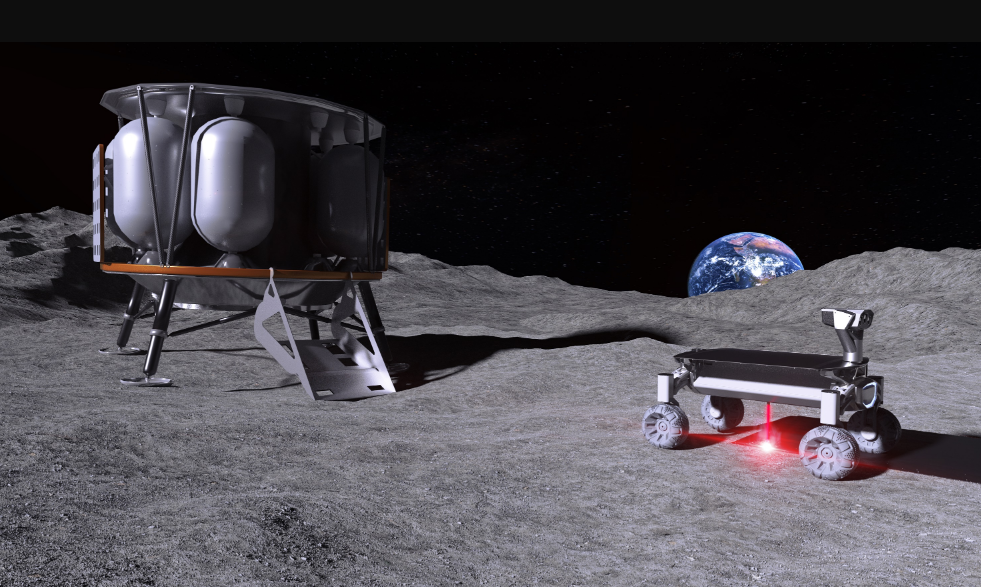In terms of colonization, the smallest 3D printer possible could be stashed on board a spacecraft en route to the Moon or Mars, with robots then used to mine for moon dust (or regolith) as a material for printing suitable, long-term habitats. Keep in mind, too, that one 3D printer has the potential to replicate itself over and over, building parts for others. Studies of regolith have been ongoing for years now, along with a variety of plans for space colonization with realistic materials.
Now, data emerges from a recent study performed by The Laser Zentrum Hannover e.V. (LZH) together with the Institute of Space Systems (IRAS) of the Technical University of Braunschweig. Dubbed the MOONRISE project, this unique research led to experimentation with melting synthetic lunar dust (using both lunar and microgravity), and the Einstein-Elevator at the Hannover Institute of Technology (HITec) of the Leibniz University Hannover (LUH).
“With these spheres, we have come a big step closer to 3D printing on the moon,” said Niklas Gerdes, a scientific employee of the LZH.
The Einstein-Elevator is a new device at LUH, featuring an “actively controlled drop tower,” allowing for studies in different gravities. It also allows scientists to mimic the environment of the moon by placing the regolith samples in a vacuum. While “in flight” in the elevator, a laser system melts the moon dust, creating a sphere that cools before arrival in the experiment chamber.
“The Einstein-Elevator is equipped with long-stator linear motors. This enables us to accelerate very precisely, precisely set a vertical trajectory, but also to brake safely. In this way, we can achieve up to 300 flight attempts per day and also varying degrees of gravity,” says Prof. Dr.-Ing. Ludger Overmeyer, LUH.
Lunar dust exhibits variations in composition, explained Prof. Dr.-Ing. Enrico Stoll from IRAS:
“With our mixtures, we simulate the lunar conditions as accurately as possible. We then evaluate the quality of the melted samples so that the LZH can further improve the process.”
The team’s next goal is to test the laser system during a real space mission to the moon. If this new technique involving melted regolith is successful in further experimentation, the scientists expect to have made significant progress toward the creation of a real habitat on the Moon. Watch an extremely informative video about the potential of regolith here.
3D printing has been used by organizations like NASA for decades, long before the general public even knew what it was; however, in terms of projects like space colonization, the advantages are even greater. The technology itself is versatile and allows for the fabrication of parts that may not have been previously possible via conventional methods.
Materials may be more affordable, production is faster, and parts that are lighter in weight and in some cases higher-performance may be possible, too; with all of the general miracles aside, however, 3D printing is a good match with space travel due to space limitations. Astronauts can take 3D printing hardware and software into space and then print parts that are uploaded from a data file. This is more than just feasible, as 3D printing at the International Space Station has been occurring since a Made in Space 3D printer was delivered there in 2014 by the Space X Dragon supply freighter. Now, other companies are exploring the benefits of bioprinting and using other 3D printing techniques due to the benefits of microgravity.
You may wonder why so much attention is paid to the idea of traveling to the moon, or beyond that, living there; after all, while space navigation is fascinating, NASA has expounded on many plans for sending astronauts to Mars in the next decade. So, why would we want to set up habitable colonies there, when obviously there is much more to explore? In reality, the Moon could offer many potential resources such as minerals, oil, and even soil.
Beyond that, however, there are many different reasons that scientists value Moon research—with one of the most critical being that it is actually important to have an alternate plan for human habitation should a catastrophe befall—or be expected to befall—Earth. While it sounds pretty sci-fi, it is true that organizations like NASA realize the need to have a backup should it appear that we are about to go the way of the dinosaurs.
[Source / Images: LZH]Subscribe to Our Email Newsletter
Stay up-to-date on all the latest news from the 3D printing industry and receive information and offers from third party vendors.
Print Services
Upload your 3D Models and get them printed quickly and efficiently.
You May Also Like
3D Printing News Briefs, July 2, 2025: Copper Alloys, Defense Manufacturing, & More
We’re starting off with metals in today’s 3D Printing News Briefs, as Farsoon has unveiled a large-scale AM solution for copper alloys, and Meltio used its wire-laser metal solution to...
3DPOD 260: John Hart on VulcanForms, MIT, Desktop Metal and More
John Hart is a Professor at MIT; he´s also the director of the Laboratory for Manufacturing and Productivity as well as the director of the Center for Advanced Production Technologies....
3D Printing News Briefs, June 28, 2025: Defense Accelerator, Surgical Models, & More
In this weekend’s 3D Printing News Briefs, 3YOURMIND was selected to join an EU Defense Accelerator, and PTC has announced model-based definition (MBD) capabilities within Onshape. Finally, a study out...
EOS in India: AM’s Rising Star
EOS is doubling down on India. With a growing base of aerospace startups, new government policies, and a massive engineering workforce, India is quickly becoming one of the most important...




































